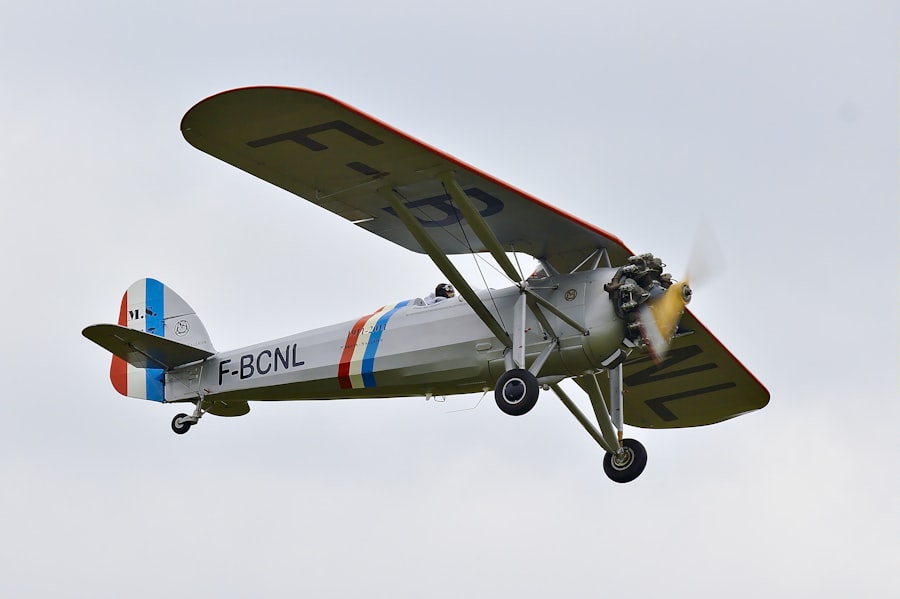
Aircraft body and bonded structure repairers play a crucial role in the aviation industry, focusing on the maintenance and repair of aircraft fuselages, wings, and other structural components. Their primary responsibility is to ensure that the aircraft’s body is structurally sound and free from defects that could compromise safety. This involves inspecting, repairing, and replacing damaged parts, often using advanced materials such as composites and aluminum alloys.
In addition to hands-on repair work, aircraft body and bonded structure repairers are responsible for documenting their findings and the work performed. This documentation is essential for maintaining compliance with aviation regulations and ensuring that all repairs meet the stringent safety standards set by organizations such as the Federal Aviation Administration (FAA) in the United States.
Repairers may also collaborate with engineers and other technicians to develop solutions for complex structural issues, making their role integral to the overall safety and performance of the aircraft.
Key Takeaways
- Aircraft body and bonded structure repairers are responsible for repairing and maintaining the structural components of aircraft, including wings, fuselage, and tail sections.
- A high school diploma or equivalent is typically required for entry-level positions, but some employers may prefer candidates with formal training from a technical school or community college.
- Success in this field requires strong attention to detail, manual dexterity, problem-solving skills, and the ability to work in a team environment.
- The job outlook for aircraft body and bonded structure repairers is expected to be stable, with a median annual wage of around ,000.
- Aircraft body and bonded structure repairers often work in hangars, repair stations, or manufacturing facilities, and may be exposed to loud noises, fumes, and hazardous materials.
Education and Training Requirements for Aircraft Body and Bonded Structure Repairers
To become an aircraft body and bonded structure repairer, individuals typically need a high school diploma or equivalent. However, many employers prefer candidates who have completed specialized training programs in aviation maintenance technology or a related field. These programs often include coursework in aerodynamics, materials science, and structural repair techniques, providing students with a solid foundation in the principles of aircraft design and maintenance.
In addition to formal education, aspiring repairers are usually required to complete an apprenticeship or on-the-job training program. This hands-on experience is vital for developing the practical skills necessary for the job. Many apprenticeships last between two to four years and involve working under the supervision of experienced technicians.
During this time, trainees learn how to use various tools and equipment, perform inspections, and execute repairs on different types of aircraft structures. Certification from recognized organizations, such as the FAA or the National Center for Aerospace & Transportation Technologies (NCATT), can further enhance job prospects and demonstrate a commitment to professional development.
Skills and Qualities Needed for Success in Aircraft Body and Bonded Structure Repair

Success as an aircraft body and bonded structure repairer requires a unique blend of technical skills and personal qualities. Attention to detail is paramount; even minor oversights can lead to significant safety issues. Repairers must be meticulous in their inspections and repairs, ensuring that every component meets regulatory standards.
Federal Aviation Administration (FAA) Additionally, strong problem-solving skills are essential, as repairers often encounter unexpected challenges that require innovative solutions. Physical dexterity and mechanical aptitude are also critical attributes for this profession. Repairers frequently work with their hands, using a variety of tools to manipulate materials and perform intricate repairs.
The ability to work in confined spaces or at heights is often necessary, as many aircraft components are not easily accessible. Furthermore, effective communication skills are important for collaborating with team members and conveying technical information clearly to non-technical personnel.
Job Outlook and Salary Information for Aircraft Body and Bonded Structure Repairers
| Job Title | Median Salary | Job Outlook |
|---|---|---|
| Aircraft Body and Bonded Structure Repairers | 53,420 per year | 1% growth from 2020 to 2030 |
The job outlook for aircraft body and bonded structure repairers is generally positive, driven by the ongoing demand for air travel and the need for regular maintenance of aging aircraft fleets. According to the U.S. Bureau of Labor Statistics (BLS), employment in this field is projected to grow at a rate of about 5% over the next decade, which is on par with the average growth rate for all occupations.
This growth is influenced by factors such as increased air traffic, advancements in aviation technology, and the need for compliance with safety regulations. In terms of salary, aircraft body and bonded structure repairers can expect competitive compensation that varies based on experience, location, and employer. As of 2023, the median annual wage for aircraft and avionics equipment mechanics and technicians was approximately $66,000.
Entry-level positions may start at lower salaries, while experienced professionals can earn significantly more, especially if they take on supervisory roles or specialize in high-demand areas such as composite materials or advanced avionics systems.
Work Environment and Conditions for Aircraft Body and Bonded Structure Repairers
Aircraft body and bonded structure repairers typically work in hangars or maintenance facilities where they have access to specialized tools and equipment necessary for their tasks. These environments are often well-lit and organized to facilitate efficient workflow. However, repairers may also find themselves working outdoors during inspections or repairs on aircraft that are parked on tarmacs or runways.
The work can be physically demanding; repairers may spend long hours standing, bending, or kneeling while performing repairs. Safety is a top priority in this field, as workers are often exposed to hazardous materials such as adhesives, solvents, and chemicals used in the bonding process. Therefore, adherence to safety protocols is essential to minimize risks associated with these substances.
Personal protective equipment (PPE), including gloves, goggles, and respirators, is commonly used to ensure worker safety.
Advancements and Opportunities for Aircraft Body and Bonded Structure Repairers

Career advancement opportunities for aircraft body and bonded structure repairers can be quite promising. With experience and additional training, many professionals move into supervisory or management positions within maintenance facilities or airlines. Some may choose to specialize further in areas such as composite materials or advanced structural repair techniques, which can lead to higher salaries and increased job responsibilities.
Additionally, obtaining certifications from recognized organizations can enhance career prospects significantly. For instance, becoming an FAA-certified Airframe & Powerplant (A&P) mechanic allows repairers to perform a broader range of tasks on aircraft, increasing their employability. Continuous education through workshops or courses on emerging technologies in aviation can also provide repairers with a competitive edge in the job market.
Challenges and Risks Faced by Aircraft Body and Bonded Structure Repairers
Despite the rewarding nature of their work, aircraft body and bonded structure repairers face several challenges and risks in their profession. One significant challenge is keeping up with rapidly evolving technology in the aviation industry. As aircraft become more advanced with new materials and systems, repairers must continually update their skills and knowledge to remain effective in their roles.
Moreover, the physical demands of the job can lead to fatigue or injury if proper precautions are not taken. Working at heights or in confined spaces poses inherent risks that require strict adherence to safety protocols. Additionally, the pressure of meeting tight deadlines for repairs can create a stressful work environment, particularly during peak travel seasons when aircraft maintenance schedules are more demanding.
How to Pursue a Career as an Aircraft Body and Bonded Structure Repairer
For those interested in pursuing a career as an aircraft body and bonded structure repairer, the first step is to obtain a high school diploma or equivalent qualification. Following this foundational education, prospective repairers should seek out accredited aviation maintenance programs that offer specialized training in aircraft structures. Many community colleges and technical schools provide these programs, which often include both classroom instruction and hands-on training.
After completing an educational program, individuals should consider applying for apprenticeships or entry-level positions within aviation maintenance facilities. Gaining practical experience under the guidance of seasoned professionals is invaluable for developing the necessary skills for success in this field. Additionally, aspiring repairers should stay informed about industry trends and advancements by participating in workshops or joining professional organizations related to aviation maintenance.
This proactive approach not only enhances technical knowledge but also expands professional networks within the industry.
If you are interested in learning more about careers in the USA as an Aircraft Body and Bonded Structure Repairer, you may want to check out the article “Top 10 Highest Paying Skilled Trades Jobs in the USA” on careersintheusa.com. This article provides valuable information on various high-paying skilled trades jobs in the United States, including the potential salary and job outlook for each career. It can help you gain a better understanding of the opportunities available in the field of aircraft body and bonded structure repair.
FAQs
What is the role of an Aircraft Body and Bonded Structure Repairer?
Aircraft Body and Bonded Structure Repairers are responsible for repairing and maintaining the structural components of aircraft, including wings, fuselage, and tail sections. They work to ensure that aircraft are safe and in proper working condition.
What are the typical job duties of an Aircraft Body and Bonded Structure Repairer?
Typical job duties of an Aircraft Body and Bonded Structure Repairer include inspecting aircraft for damage, repairing or replacing damaged parts, using specialized tools and equipment to perform repairs, and following safety procedures and regulations.
What skills and qualifications are required for a career as an Aircraft Body and Bonded Structure Repairer?
Aircraft Body and Bonded Structure Repairers typically need a high school diploma or equivalent, as well as formal training in aircraft maintenance and repair. They also need to have strong mechanical skills, attention to detail, and the ability to work in a team environment.
What are the work environment and conditions like for Aircraft Body and Bonded Structure Repairers?
Aircraft Body and Bonded Structure Repairers typically work in hangars, repair stations, or on airfields. They may be exposed to loud noise, fumes, and other hazards, so they need to follow safety procedures and wear protective equipment.
What is the job outlook for Aircraft Body and Bonded Structure Repairers in the USA?
According to the Bureau of Labor Statistics, the job outlook for Aircraft Body and Bonded Structure Repairers is projected to decline by 18% from 2020 to 2030, mainly due to advancements in aircraft technology and the use of more durable materials.



